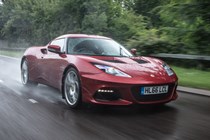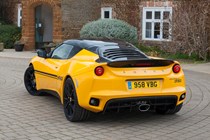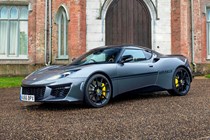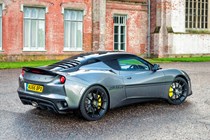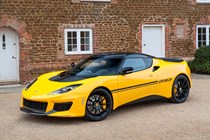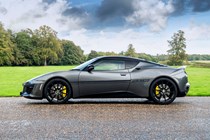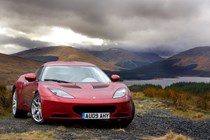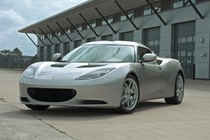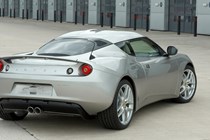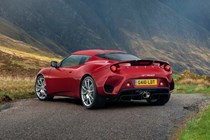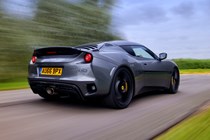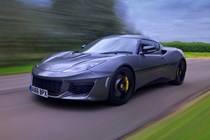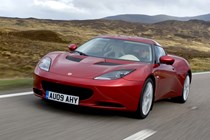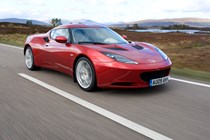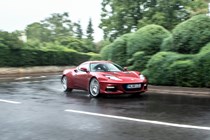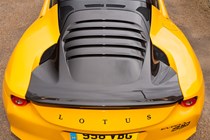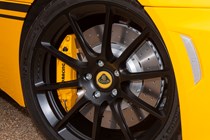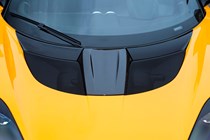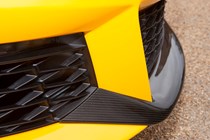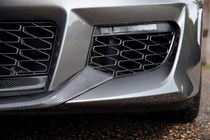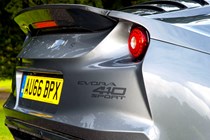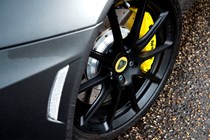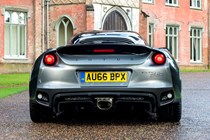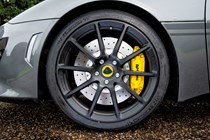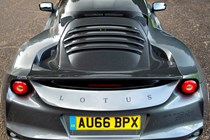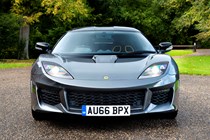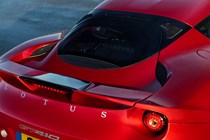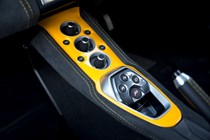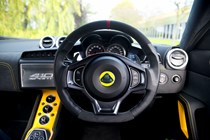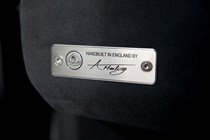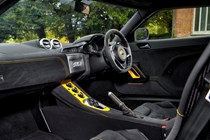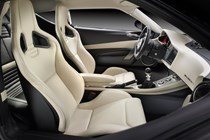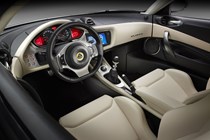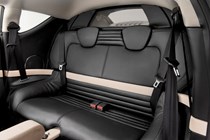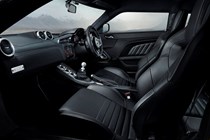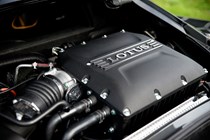
Lotus Evora Coupe (2009-2021) interior, tech and comfort
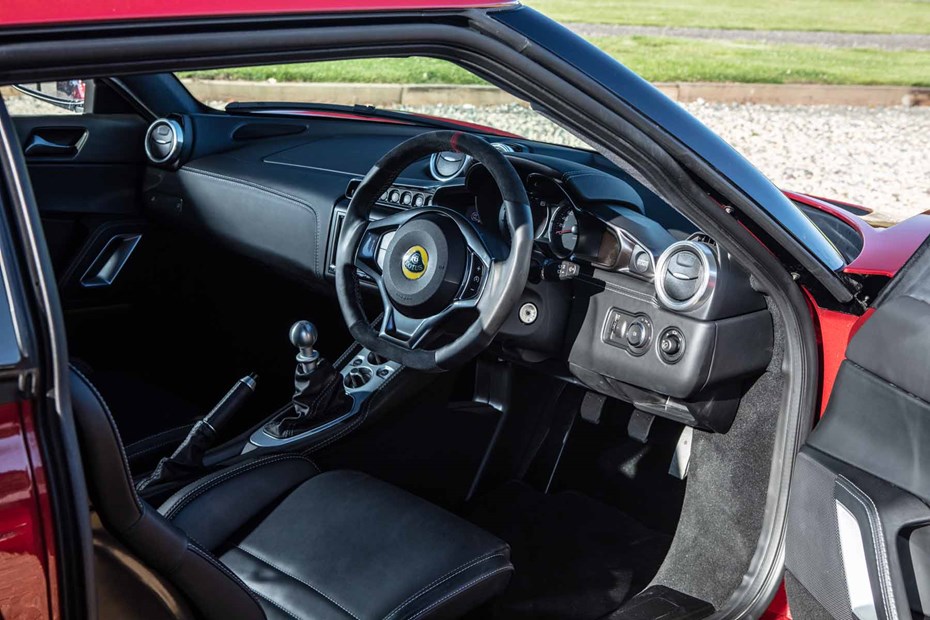
- Functional and ergonomic
- Not the most stylish to look at
- Some old Ford bits used
While you’re completely preoccupied by the Evora’s agile handling and trademark V6 soundtrack, the interior of the car will feel perfectly functional to use – everything is within reach, the dials are clear and the air conditioning blows hot or cold air at you. What more do you want?
The trouble is, when you’re just driving normally, you’ll start to notice that the stalks, vents and switches look like they’re from an old Fiesta (because they are) and that the dashboard design is quite dark and featureless.
In reality, does it matter? If you’ve bought an Evora for the driving experience then nothing about the interior will spoil that, but if you’re also looking at a Porsche Cayman or Audi TT coupe then the car from Norfolk starts to feel a bit dated in terms of cabin design.
The Alpine A110 has a similar trade-off in driving experience vs cockpit interior quality but it’s also quite a lot cheaper than the Evora, so it’s easier to excuse.
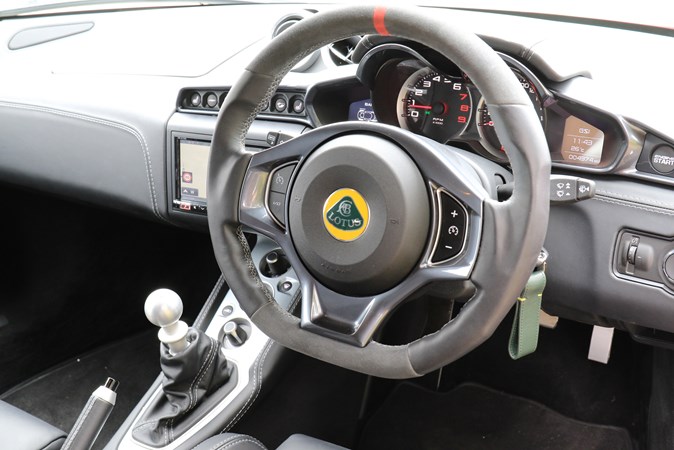
Things have improved in this department since the 2012 model year update, but there’s still an anonymous feel to the buttons and switches, and the Alpine touchscreen unit (although perfectly functional) sticks out like a sore aftermarket thumb.
Fit and finish is respectable for a low-volume car though – there aren’t any huge panel gaps or exposed screwheads. Plus, once you’re ensconced in the supportive driver seat, staring out of the goldfish bowl windscreen with the low nose disappearing out of view ahead, there’s a definite sense of occasion that no scratchy plastic can compromise.
GT410 vs GT410 Sport
The more everyday GT410 has some comfort-focussed upgrades like door armrests, a reversing camera and more sound insulation to keep things quiet on a long drive.
Sparco leather sport seats (heated!) are a great compromise between supportive and squashy and there’s an upgraded infotainment system with sat-nav and Apple CarPlay as standard.
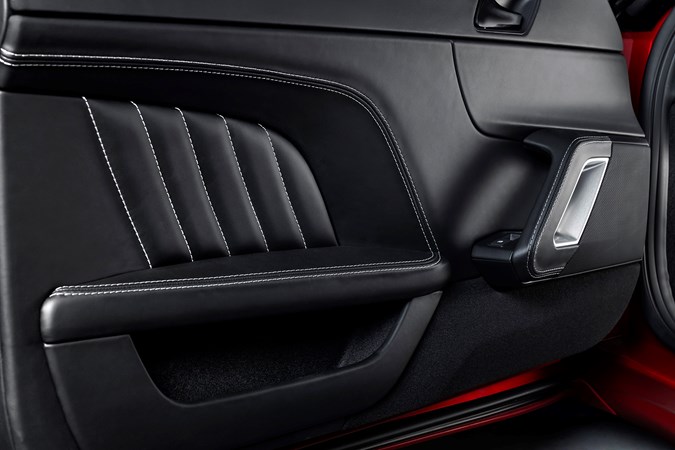
The Sport model has Alcantara where the GT410 has leather, so there’s swathes of the stuff on the steering wheel, dashboard, door panels, transmission tunnel, centre console and instrument binnacle.
Comfort
- A surprising ace card
- GT410 particularly good
- Not a lot of headroom if you’re tall
It would be a massive cliché to talk about there being witchcraft involved in the Evora’s chassis but there is something about the way it corners while still offering a saloon-rivalling ride that doesn’t seem to fit with conventional thinking. Bear in mind this is a normal-springs-and-dampers set up too, no fancy driver modes or bumpy road settings.
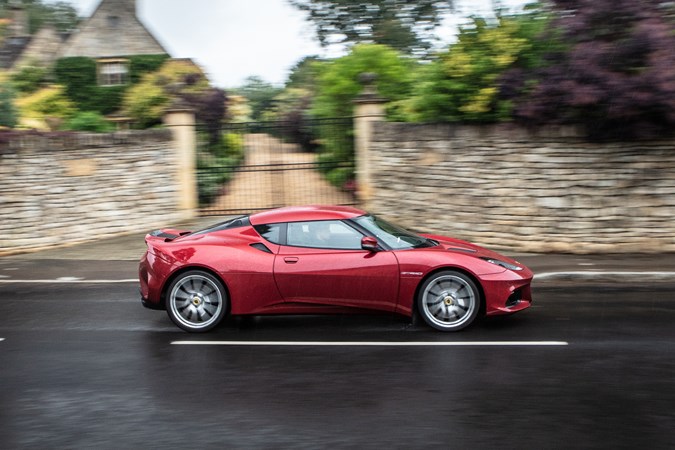
The Lotus proves that ‘sporty’ doesn’t have to mean ‘rock hard ride’ even if it does so by being light at the expense of a lot of modern driver aids and comforts. Particularly impressive in this regard is the GT410, set up to be the more compliant Evora option, which rides in a way that we’d consider good in an executive car, not a coupe.
That’s because the suspension has a softer tune and the tyres feature more forgiving sidewalls, and extra sound-proofing has been stuffed into the bodywork. So it’s quiet when you want it to be too – there’s a bit of road noise but the exhaust can be turned right down using a button on the dash, and as long as you don’t rev it past 4-5,000rpm, you will barely hear the engine. Which would be a great shame.
One complaint to note is that you do sit quite high up, and while this gives you a good view of the world outside it does mean restricted headroom for taller drivers, particularly if plan on taking you Evora to the track and need to wear a helmet.


